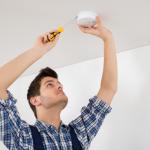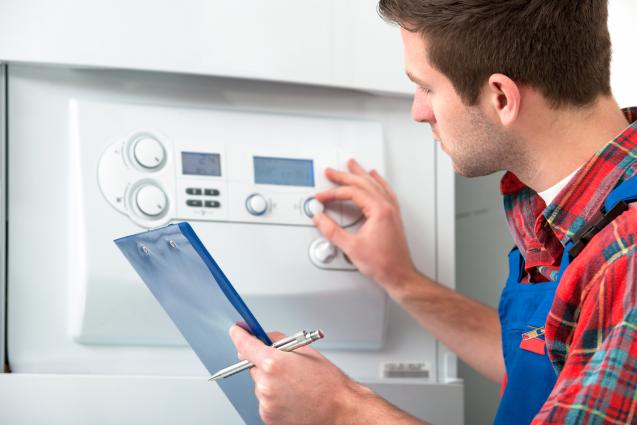
Exploring Different Smoke Alarm Systems: Maximising Home Safety in Australia
Understanding the Importance of Smoke Alarms
Smoke alarms are quite simple in their functionality. Their design allows them to monitor the air continuously for signs of smoke, indicating potential fire threats. The presence of smoke prompts the device to sound an alarm, alerting any individual within hearing distance that they are in imminent danger.
With approximately 4,500 residential fires reported every year as per Fire and Rescue NSW, fires are a significant safety concern in Australia. Studies suggest a strong correlation between working smoke alarms and reduced casualty rates. Among these occurrences, homes equipped with operational smoke alarms have consistently shown a lower casualty rate, underscoring their fundamental role in fire safety.
To mitigate the risk of fire-related incidents, Australian building codes and safety regulations stipulate the compulsory installation of smoke alarms in all residential properties. Numerous personal accounts flood the internet, attesting to the efficacy of smoke alarms in averting tragedy and allowing for early evacuation, thereby saving countless lives.
Types of Smoke Alarms in Australia
Australia's fire detection market features mainly three types of smoke alarms, each with its unique strengths. These are photoelectric, ionisation, and dual-sensor alarms.
Photoelectric smoke alarms have a distinct ability to detect smoky and smouldering fires - the type frequently seen in residential fires. They are less susceptible to false alarms triggered by cooking fumes or steam from showers, making them preferred by many homeowners.
In contrast, ionisation smoke alarms are more reactive to fast, flaming fires. However, their heightened sensitivity can also be a drawback as they are more prone to being triggered by harmless sources such as cooking or steam, leading to potential false alarms.
For those inhabitants who wish for a balanced approach towards fire safety, dual sensor smoke alarms provide the answer. Representing technological advancement in fire safety, these alarms combine the best of both photoelectric and ionisation alarms, thereby offering holistic protection and minimising potential shortcomings.
Smoke Alarm Standards and Regulations in Australia
In Australia, smoke alarms' installation and performance fall under the Australian Standard AS 3786-2014, which outlines the minimum operational benchmarks they must meet to be deemed fit for home installation.
The implementation of this regulation slightly differs between Australian states and territories. Even so, it is universally required to adhere to the AS 3786-2014 standard. To avoid facing legal issues unknowingly, homeowners must familiarise themselves with the specific regulations applicable in their region.
Neglecting these clauses accompanying this standard can lead to severe consequences. These could include fines and even legal liability if a fire-related injury or fatality occurs due to non-compliance.
Proper Installation and Maintenance of Smoke Alarms
The positioning of smoke alarms in your home plays a significant role in its ability to detect fires efficiently. For optimal coverage, it is recommended to install smoke alarms on every level of your home. They should be placed in every bedroom and in hallways adjacent to sleeping areas. It's important to note that you’ll need a licensed electrician to help install your new smoke detector; this is to ensure that the installation is conducted correctly following safety protocols.
As part of your home maintenance routine, it is vital to test the functionality of these alarms at least once a month. Regular checks ensure that they are operational and capable of alerting in case of a fire. While both professional and DIY installation methods have their merits and drawbacks, the focus should always be on maximising safety.
Landlords, Tenants, and Smoke Alarm Responsibilities
In terms of responsibility towards smoke alarms, landlords and tenants must partake in the safekeeping of residential properties. In most Australian states and territories, the onus falls on landlords to ascertain that smoke alarms are properly installed and operational at the beginning of each tenancy.
Tenants, on the other hand, often bear the upkeep responsibilities during the lease period. These duties would include regular tests and battery replacements. Evidently, the meticulous adherence to these regulations leads to a safer community of rental properties, thus contributing to overall fire safety in Australia.
Conclusion
Knowing the different types of smoke alarm systems, their workings, and the regulations governing their use can greatly enhance your home safety in Australia. Such understanding not only assists Australians to make informed decisions about their fire safety arrangements but also ensures their compliance with national and state regulations to maintain these systems.
Regular maintenance is critical to their continued effectiveness, and proper installation has a direct impact on their efficiency. The diligent use of smoke alarms is a key factor in maximising home safety against the lethal threat of fires. As the guardians of Australian homes, it is incumbent on us to ensure these alarms are functional and that our homes are as safe as possible. Remember, forewarned is forearmed. With a reliable smoke alarm system vigilantly helping protect our properties, we equip ourselves with an edge to tackle any fire emergency safely and effectively.



